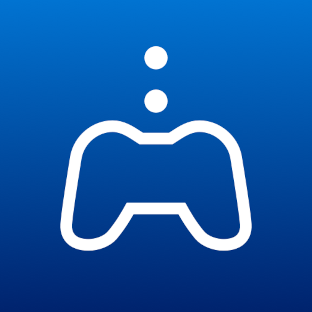PlayStation is a gaming brand of home video game consoles and associated products from Sony Interactive Entertainment.
Contents
PlayStation may also refer to:
PlayStation is a gaming brand of home video game consoles and associated products from Sony Interactive Entertainment.
PlayStation may also refer to:

A handheld game console, or simply handheld console, is a small, portable self-contained video game console with a built-in screen, game controls and speakers. Handheld game consoles are smaller than home video game consoles and contain the console, screen, speakers, and controls in one unit, allowing players to carry them and play them at any time or place.

The PlayStation is a home video game console developed and marketed by Sony Computer Entertainment. It was released in Japan on 3 December 1994, followed by North America on 9 September 1995, Europe on 29 September 1995, and other regions following thereafter. As a fifth-generation console, the PlayStation primarily competed with the Nintendo 64 and the Sega Saturn.
P.S. commonly refers to:

The Net Yaroze is a development kit for the PlayStation video game console. It was a promotion by Sony Computer Entertainment to computer programming hobbyists which launched in June 1996 in Japan and in 1997 in other countries. It was originally called "Net Yarouze", but was changed to "Net Yaroze" in late 1996. Yarōze means "Let's do it together".

The PlayStation Portable (PSP) is a handheld game console developed and marketed by Sony Computer Entertainment. It was first released in Japan on December 12, 2004, in North America on March 24, 2005, and in PAL regions on September 1, 2005, and is the first handheld installment in the PlayStation line of consoles. As a seventh generation console, the PSP competed with the Nintendo DS.
PS1, Ps 1, PS-1, PS/1 or PS One may refer to:
PSX may refer to:

The XrossMediaBar is a graphical user interface developed by Sony Computer Entertainment. The interface features icons that are spread horizontally across the screen. Navigation moves the icons, instead of a cursor. These icons are used as categories to organize the options available to the user. When an icon is selected on the horizontal bar, several more appear vertically, above and below it. They, in turn, are selectable by the up and down directions on a directional pad.
Various accessories for the PlayStation 3 video game console have been produced by Sony and third-party companies. These include controllers, audio and video input devices like microphones, video cameras, and cables for better sound and picture quality.

Remote Play is a native functionality of Sony video game consoles that allow the PlayStation 3, PlayStation 4 and PlayStation 5 to wirelessly transmit video and audio output to a receiving device, which would also control the console. Remote Play works either nearby, when both the console and the receiver are on the same home local area network, or remotely via the Internet through Sony's servers.

PlayStation Store is a digital distribution service for users of Sony's PlayStation 3, PlayStation Vita, PlayStation 4 and PlayStation 5 game consoles via PlayStation Network.
The PlayStation Portable system software is the official firmware for the PlayStation Portable (PSP). It uses the XrossMediaBar (XMB) as its user interface, similar to the PlayStation 3 console.

PlayTV is an add-on unit for the PlayStation 3 video game console that allows it to act as a digital television receiver, and digital video recorder, using the DVB-T standard.
PlayStation is a video gaming brand that consists of five home video game consoles, two handhelds, a media center, and a smartphone, as well as an online service and multiple magazines. The brand is produced by Sony Interactive Entertainment, a division of Sony.

The PlayStation 2 (PS2) is a home video game console developed and marketed by Sony Computer Entertainment. It was first released in Japan on 4 March 2000, in North America on 26 October 2000, in Europe on 24 November 2000, in Australia on 30 November 2000, and other regions thereafter. It is the successor to the PlayStation, as well as the second installment in the PlayStation brand of consoles. As a sixth-generation console, it competed with Nintendo's GameCube, Sega's Dreamcast, and Microsoft's Xbox. It is the best-selling video game console of all time, having sold over 160 million units worldwide, nearly triple the combined sales of its competing consoles.

The PSX is a digital video recorder and home video game console released by Sony in Japan on December 13, 2003. Since it was designed to be a general-purpose consumer video device, it was marketed by the main Sony Corporation instead of Sony Computer Entertainment and does not carry the usual PlayStation branding. Initial sales were strong, with the console selling 100,000 units during its first week, thus selling out. Its high cost, however, resulted in poor sales later on, prompting Sony to cancel plans to release the PSX outside Japan. After the price had been lowered in September 2004, sales increased again.

The PlayStation Vita is a handheld game console developed and marketed by Sony Computer Entertainment. It was first released in Japan on December 17, 2011, then in other international territories on February 22, 2012, and was produced until discontinuation on March 1, 2019. The console is the successor to the PlayStation Portable (PSP), and a part of the PlayStation brand of gaming devices; as part of the eighth generation of video game consoles, it primarily competed with the Nintendo 3DS.